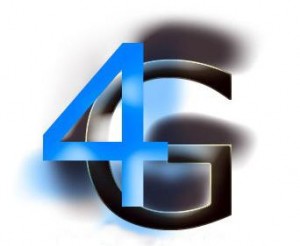By Michael Dinan, TMCnet Editor www.4g-wirelessevolution.tmcnet.com
Following relevations from the WiMAX (News – Alert) Forum that the world now has 10 million WiMAX subscribers – a daunting number for the technology that’s competing with WiMAX for dominance in the super-fast wireless 4G space, LTE – the technologies had a very busy week.
 On Monday, Motorola (News-Alert), Inc. announced that its Home & Networks Mobility business and UAE telecom provider du are collaborating to launch Dubai Metro’s mobile WiMAX network – a move that’s expected (despite Dubai’s financial troubles) to boost that 10 million number significantly.
On Monday, Motorola (News-Alert), Inc. announced that its Home & Networks Mobility business and UAE telecom provider du are collaborating to launch Dubai Metro’s mobile WiMAX network – a move that’s expected (despite Dubai’s financial troubles) to boost that 10 million number significantly.At the same time, as TMC’s (News-Alert) Gary Kim reported, Verizon Wireless announced that its LTE (News-Alert) network would be launched in 25 to 30 markets in 2010, covering approximately 100 million people.
Importantly, the telco giant said its network would feature “average” data rates per user of 5 Mbps to 12 Mbps in the downstream, with 2 Mbps to 5 Mbps in the upstream path. Verizon also touts the use of 700-MHz spectrum for its LTE network, a key consideration for easy use of LTE devices and networks inside buildings and homes.
“The analogy is in-building use of over-the-air radio and TV. Most people who use wireless phones, and have used over-the-air radio and TV, know that indoor coverage is an issue,” Kim writes. “Basically, the issue is that lower-frequency signals have better ability to penetrate solid objects and travel long distances. Verizon argues that 700 MHz spectrum therefore will have better in-building propagation than signals using the 2.5 Ghz band available in the United States for other 4G technologies such as WiMAX.”
LTE continued its momentum as, later in the week, ZTE (News-Alert) Corporation, a provider of telecommunications equipment and network solutions, announced that it has successfully demonstrated its TD-LTE network technology and achieved a downlink speed of 130Mbps.
The company is said to have conducted the tests using ZTE system products including EPC, eNodeB, etc in Guangzhou in November, with third-part terminal testing tools. With this, the company has created a simple and smooth transition path for operators to move to LTE through its mature and stable SDR Base Stations. As a result, networks can be upgraded from TD-SCDMA to TD-LTE or to TD-S/TD-LTE dual-mode through a simple software upgrade, saving operators time and money.
Today, one of the more interesting stories emerged from the prairies of the United States, as OneFi Technology, Inc., a WiMAX technology provider that develops broadband networks with 4G compatibility, announced that it is planning to start the initial installation of WiMAX/BPL Technology in the Hogback Region of the Navajo Nation next month.
Thee company said it believes that once the network is completed, it will be valued at $20 million.
“We are delivering the network to meet the broadband internet needs of the Navajo community and the installation will be a model for the other Native American communities,” said Tom White, chief financial officer at OneFi, who is managing the project.



















